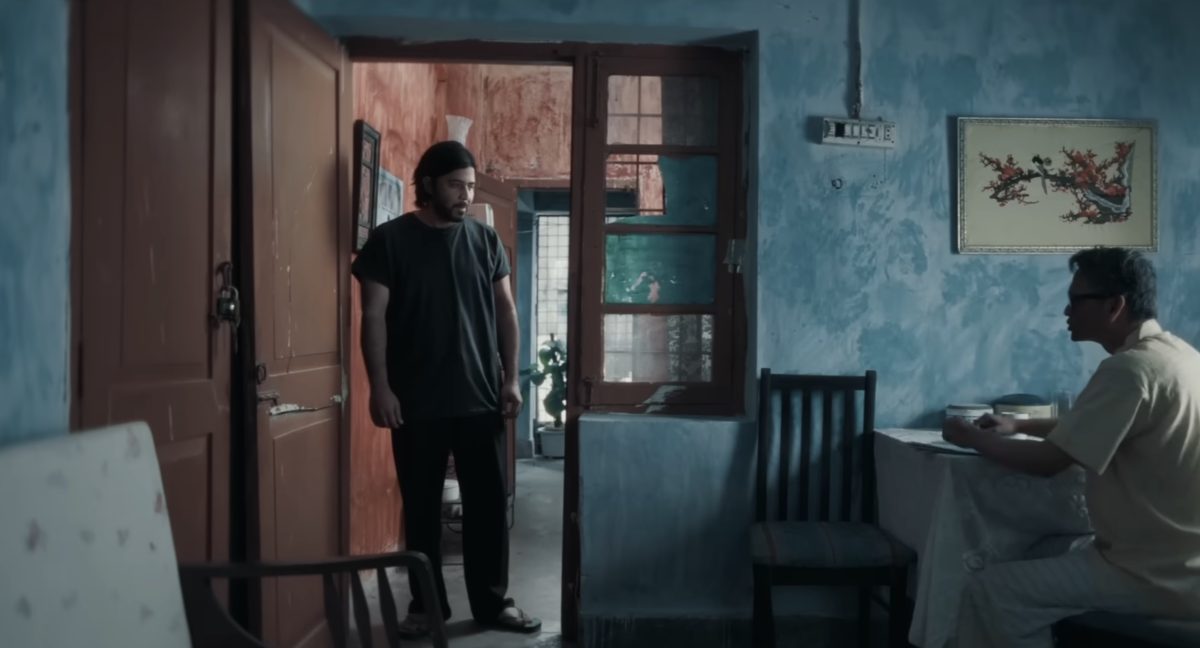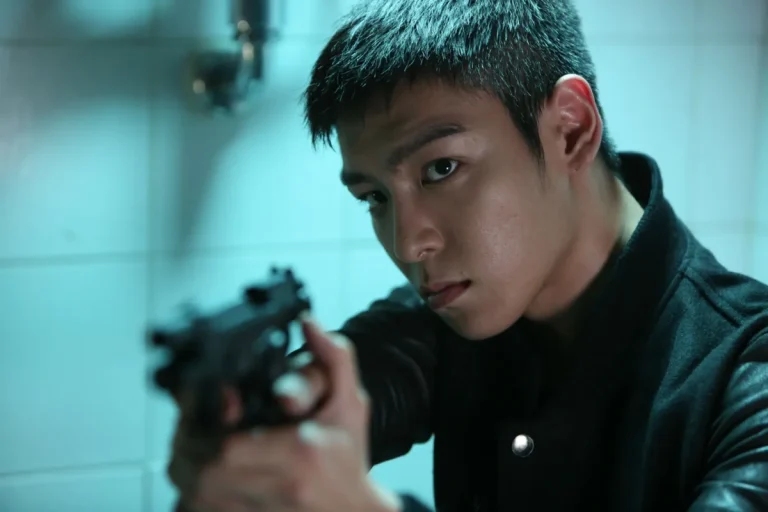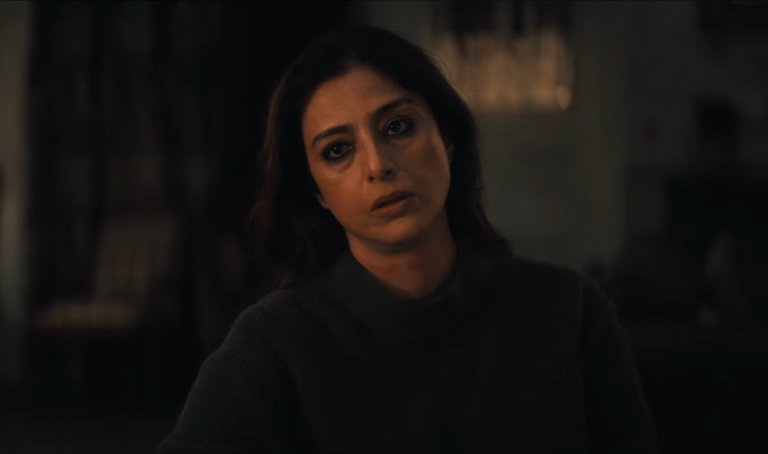AKA (Web Series 2025), the latest Bangladeshi web series from the popular duo Afran Nisho and Vicky Zahed, arrived on Hoichoi with promises of a gripping vigilante thriller. What we got instead was a courier service for recycled tropes—delayed, fragile, and slightly damaged on arrival. Marketed as an homage to classics like Martin Scorsese’s “Taxi Driver,” Satyajit Ray’s “Pratidwandi,” and Kim Jee-woon’s “I Saw the Devil,” the series ends up ripping off ideas and entire scenes. The worst victim here is “Taxi Driver.” Its iconic line—“Here is a man who would not take it anymore”—is reduced to a hollow pastiche.
The Setup: A Flimsy Foundation
The series centers around Abdul Kalam Azad, a delivery boy working for a courier company ( Nisho) whose tragic past is shown in the opening scene. He was brought up by a distant relative angle who has a love-hate relationship with him. Azad works double shifts but still can’t sleep at night. He tries to find solace in music and poetry. His poetry is tolerable, but the less said about his singing abilities, the better. He tries to emulate his idol rockstar by imitating his looks and playing the guitar, but gets a taste of crushing reality when he is humiliated by his idol during a televised audition for a reality show.
Here is where the show starts faltering. What makes “Taxi Driver” great is the black comedic element in Travis Bickle’s futile efforts to get accepted by society and create any sort of tangible connection with fellow human beings. Yes, we are supposed to relate to Travis’ loneliness. Perhaps each one of us has felt that in a certain aspect of our lives, but most of us are better at dealing with it than him. Zahed’s scripts drain all humor, giving Azad’s struggles a lifeless, overdone treatment. Instead of complexity, we get cliché: the cruel boss, the stolen parcel leading to one of the many episodic seizure attacks. We have seen these beats countless times, and it all feels derivative.
Hoichoi’s usual issue resurfaces: short episode runtimes that strangle character development. A half-baked love angle is tossed in with Nabila, a kind woman smitten by Azad’s poetry. These early moments are tolerable, but the show collapses when it ventures into serial-killer territory.
From Drifter to Vigilante—With No Logic in Sight
It all starts when Azad, in a drunken rage, murders a paedophile while walking home from a bar. The bar definitely deserves a special mention. The place with a cool neon logo serving… country liquor ?? The murder becomes viral, and a large section of the netizens support the act, linking it to some vigilante-style justice. Comparisons are made with an almost mythical serial killer, AKA, who doled out such vigilante-style justice 25 years ago in Bangladesh and then suddenly disappeared. Logic from the script is thrown out of the window. Why would a random murder done by using a brick as a murder weapon be compared to a serial killing done 25 years ago? The only resemblance to the yesteryear murders was that the victim was an outlaw yet to be convicted by the police.
From here, the script spins wildly. Overnight, Azad transforms from a shy loner into a master stalker who steals police evidence and operates a Facebook page named “AKA,”. Targets are chosen from the Facebook page, where netizens vent their frustrations regarding the country’s lawlessness and the impunity of the rich and influential. Azad obtains SIM cards of deceased people from the black market for one-time usage to access the Facebook page. Maybe the creators didn’t know that mobile phones can be tracked by their unique IMEI numbers, too.

For a screenplay that shows the usage of AI to create fake videos and facial structure from eyewitness profiles, you would expect the creators to do basic research to avoid such glaring plot holes. Although seeing the utter cluelessness of the Bangladeshi Police force on display throughout the series, one wonders whether it would have made any difference. Sample this – the police have set a trap in a hotel to catch Azad, who walks into the hotel looking hilariously in a hoodie and surgical mask in the middle of the day. No one, including the people at the lobby or at the CCTV console room, raised any alarms seeing this weirdo enter the hotel. The way Azad exits the hotel only highlights the ineptitude of the police. An eyewitness to the previous murder committed by AKA appears in the same hotel, but nobody bothers to track her afterwards.
Borrowed Darkness, Botched Execution
The final act borrows heavily from “I Saw the Devil,” as Azad is consumed by his vigilante alter ego. The pregnant wife of detective Imtiaz Borshon—who is investigating AKA—emerges as the next target after her name tops the Facebook poll. She is linked to a baby formula scandal that killed children. But borrowing from classics is pointless when the execution falters. The show makes it absurdly easy for Azad to justify murder via social-media polls. Trauma and mental illness are touched upon, but equating seizures with bipolar syndrome is both ignorant and offensive.
The killing of the detective’s wife and Azad’s subsequent escape on a motorbike, reciting his poetry, feels disturbingly tone-deaf. Instead of questioning vigilante justice, the series almost glorifies it. By the end, the grieving detective embraces his own dark side, setting up a blood-soaked road to season 2. There is also a reveal, which anyone paying close attention could see miles ahead.
Technical Aspects: Bare Minimum Effort
From a technical point of view, the series does not offer anything different than other Hoichoi offerings. Most of the shots are taken with the camera placed on a tripod. There is hardly any tracking or panning camera movements. As mentioned, due to the time constraint per episode, the editing suffers. The Azad backstory feels dragged on, while the serial killer part feels rushed.
The only saving grace of the series is the performances: Nisho is charismatic and gives his best. But for me, the best performance was from Imtiaz Borshon. Despite his character being poorly written, he manages to hold the audience’s attention with his charismatic screen presence. The scenes with his wife were touching and one of the high points of the show. That’s also what makes his wife’s death more shocking. Nabila lights up the screen whenever she is in it, but her character is mostly standing there waiting for the plot to catch up.
Final Verdict
“AKA” is a missed opportunity. Instead of a sharp vigilante thriller, it gives us a clumsy pastiche weighed down by clichés, plot holes, and shallow execution. Unless season 2 comes with a tighter script and fresh ideas, this courier of recycled tropes is best marked “Return to Sender.”








